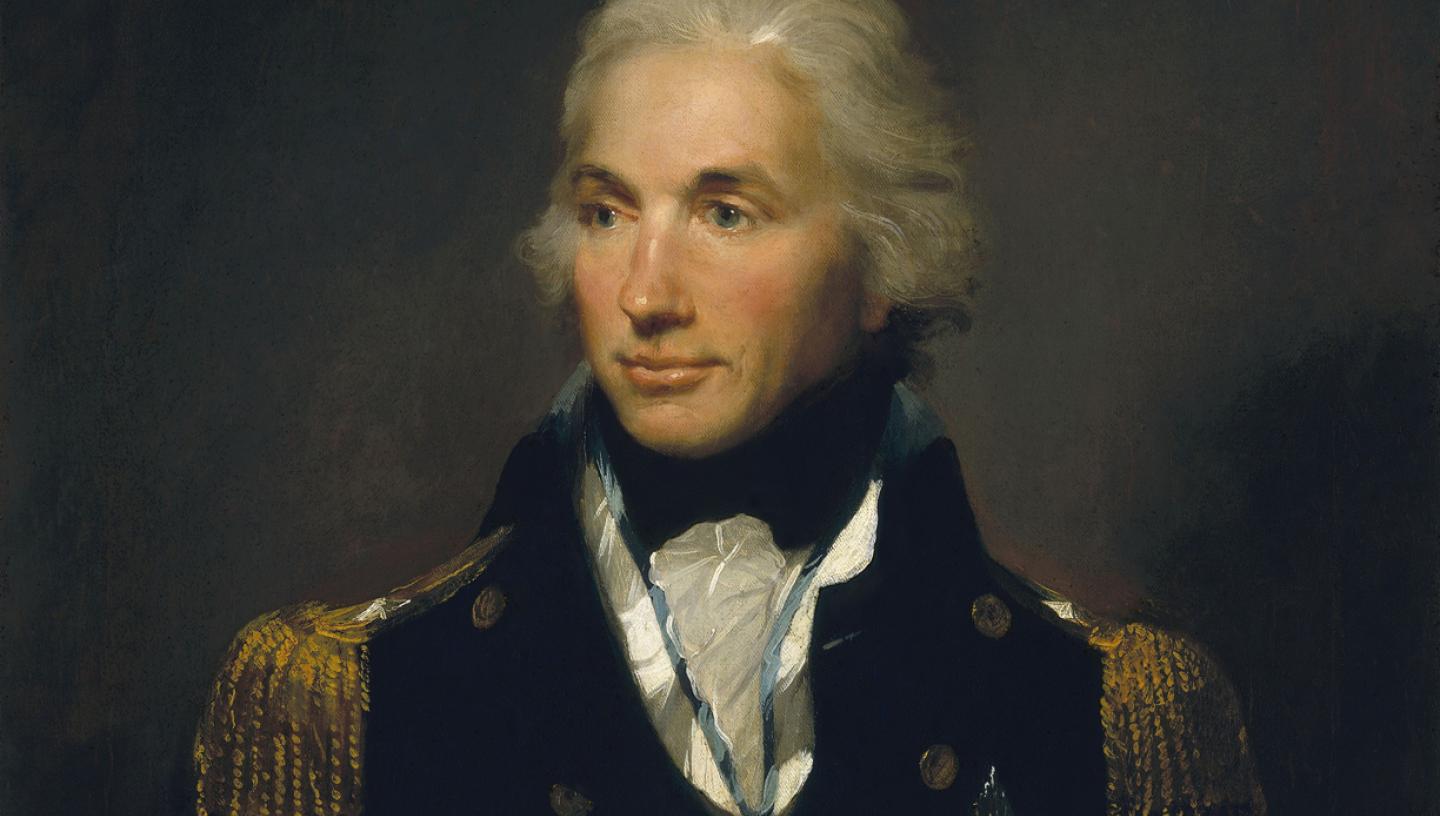
Admiral Nelson the leader
Lord Nelson is best known for his victory at the Battle of the Trafalgar but he was already a national hero before then thanks to his naval tactics.
Lord Nelson's victories and great courage caught the public imagination of his time, and he was considered a hero. Nelson had a reputation for being an inspirational leader and was greatly admired by the men under his command. He also had great skill in naval strategy and tactics.
See the coat Nelson wore at Trafalgar at the National Maritime Museum
1793-1802: French Revolutionary Wars
At the outbreak of the French Revolutionary Wars, Nelson was given command of HMS Agamemnon and appointed to Vice-Admiral Lord Hood’s fleet in the Mediterranean. There he engaged in a number of minor engagements, mainly off the coast of Italy.
In 1794 he helped the British to seize Corsica from French Revolutionary forces. In a minor land action there Nelson lost his vision in one eye, when grit was driven into it by a cannon shot. In 1795, he distinguished himself in a number of actions against the French fleet and, when commander of HMS Captain, was temporarily promoted to the rank of Commodore.
1797: Battle of Cape St Vincent
Nelson made his first headlines in 1797 at the Battle of Cape St Vincent. Under the command of Admiral John Jervis, the British fleet engaged the Spanish fleet in battle off Cape St Vincent, Portugal. On his own initiative, Nelson broke away from the British line in order to cut off the Spanish retreat. He managed to take Spanish ships, personally boarding the San Nicholas and San Josef. Although he had broken standard orders he was rewarded for his quick thinking. He was promoted to Rear-Admiral of the Blue and became a Knight Commander of the Bath for his courage and skill in battle.
1797: Attack on Santa Cruz
Following his success at Cape St Vincent, Admiral John Jervis, now Earl St Vincent, tasked Nelson with a mission to attack the port of Santa Cruz, Tenerife. The aim being to disrupt the Spanish war effort and create a chance of peace with Spain. Nelson planned the attack carefully but it was a disaster. The Spanish were prepared and fought back. Nelson was shot in the arm, while about to step ashore from his boat. He was taken back to his flagship, Theseus, where the lower arm was immediately amputated, without anaesthetic. He returned to England defeated and dejected.
1798: Battle of the Nile
Nelson returned to active service in 1798. In the Vanguard, he rejoined Admiral Jervis’s fleet in the Mediterranean, where he was put in charge of a detached squadron. They were tasked with searching for and destroying the French fleet, now under the command of Napoleon. The captains of the squadron were very close and came to be known collectively as the ‘band of brothers’.
After two months of searching, he finally found the French fleet on 1 August 1798 at Aboukir Bay, at the mouth of the Nile. Napoleon had already landed an army to take Egypt and disrupt British trade routes with India, and had already captured Alexandria and Cairo. Nelson, however, defeated the French fleet. Though he was wounded in the head during the battle, he destroyed or captured 11 of the 13 French ships. Napoleon's army was isolated in Egypt and the balance of power in the Mediterranean was reversed in Britain's favour.
News of Nelson's destruction of the French fleet was greeted with euphoria in Britain. On 6 November 1798, King George III honoured him with the title ‘Baron Nelson of the Nile and Burnham Thorpe’. Exhausted, Nelson sailed to Naples, where his ships could be repaired. While there, he recuperated at the home of Sir William Hamilton, British Ambassador to the Kingdom of Naples, and his wife Emma Hamilton, who would soon become his mistress.
1801: Battle of Copenhagen
Nelson was promoted to Vice-Admiral of the Blue and in 1801 led the British fleet in an attack on the Danish fleet off Copenhagen. The aim was to convince the Danes to back out of the league of Armed Neutrality of Russia, Prussia and the Scandinavian countries, which the British believed were in alliance with Napoleon. Under the command of Admiral Sir Hyde Parker, Nelson is said to have defied his orders to withdraw by holding a telescope up to his blind eye and claiming he could not see Parker’s signal. It was a hard-fought battle but Nelson managed to agree a truce with the Danes. He was rewarded on his return to England by being created Viscount Nelson of the Nile.
1803: Return to sea
After a brief period of peace, Nelson returned to sea in 1803 as Commander-In-Chief of the Mediterranean fleet with HMS Victory as his flagship. The navy was the first line of defence between Britain and Napoleon’s armies – who had plans to invade Britain. Nelson’s role was to prevent the French Mediterranean fleet at Toulon from escaping into the Atlantic. After chasing the Franco-Spanish fleet from Toulon to the West Indies and back, Nelson returned home in August 1805. This was to be his last visit home before his death at the Battle of Trafalgar.
Find out more about the Battle of Trafalgar
Find out more about Nelson's life and legacy at the National Maritime Museum's 'Nelson, Navy, Nation' gallery. Entry to the National Maritime Museum is free, open daily from 10am.


